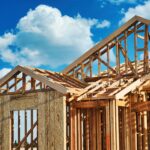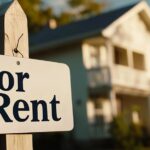Properties in cities’ vibrant mixed-use districts—walkable urban areas that include office space, living areas, restaurants, and shops—might be the key to revitalizing urban areas hit hard by the one-two punch of work from home and the pandemic, according to a new CBRE analysis. More good news: there is 43.5 million square feet of space in the United States that could be upgraded or converted for mixed-use purposes.
Finding of the study
The study, which looked at 68 mixed-use areas in 19 U.S. markets, found that not only were office vacancies lower in mixed-use areas compared to that city’s nonprime business districts (18% vs. 22%), but office rents in prime mixed-use areas were higher. (Nonprime areas tended to be office parks lacking both high-quality office space and live/work/play luxuries.)
“Reinvigorating city cores will be no easy task, but there are roadmaps for every city to consider,” said Julie Whelan, CBRE Global Head of Occupier Research. “Vibrant mixed-use districts provide a blueprint for vitality that cities can strive to foster in other neighborhoods.”
CBRE suggested strengthening existing mixed-use districts and encouraging development of non-office space in primarily office areas, such as adding apartments and upgrading existing office spaces. That 43.5 million square feet of space across those districts could be converted into 43,500 apartments and other residential units. Other options include revitalizing obsolete buildings in nonprime business areas, which accounted for 58% of the total office space in the cities reviewed.
Of course, there are other factors that could complicate conversion plans, such as a building’s structural integrity, value, the cost of conversion, and local zoning laws.
Specific cities ready to boom and their CBRE designators
CBRE divided the 19 cities in its report into four archetypes with similar strengths and weaknesses:
- Super Cities (e.g., New York and Los Angeles)
- Mixed Majors (e.g., Boston and Washington, D.C.)
- Sprawling Darlings (e.g., Dallas and Phoenix)
- Developing Destinations (e.g., Austin and Nashville)
The analysis also identified six factors critical for each city’s evolution:
- the vitality and adaptability of the city’s economy
- the city’s demographics
- its quality of life
- the state of its infrastructure
- its identity, as defined by its history, natural resources, and culture
- the responsiveness of city government
“Some of these elements can only be changed gradually, over decades. Others, such as responsive governance, can be addressed more quickly,” said John Stephens, Senior Director of CBRE Americas Consulting. “There are roles for every constituency to play in revitalizing cities. For example, building owners and developers can invest in redeveloping existing properties and contribute to placemaking of vibrant areas.”
For more information, CBRE’s press release can be found here.






